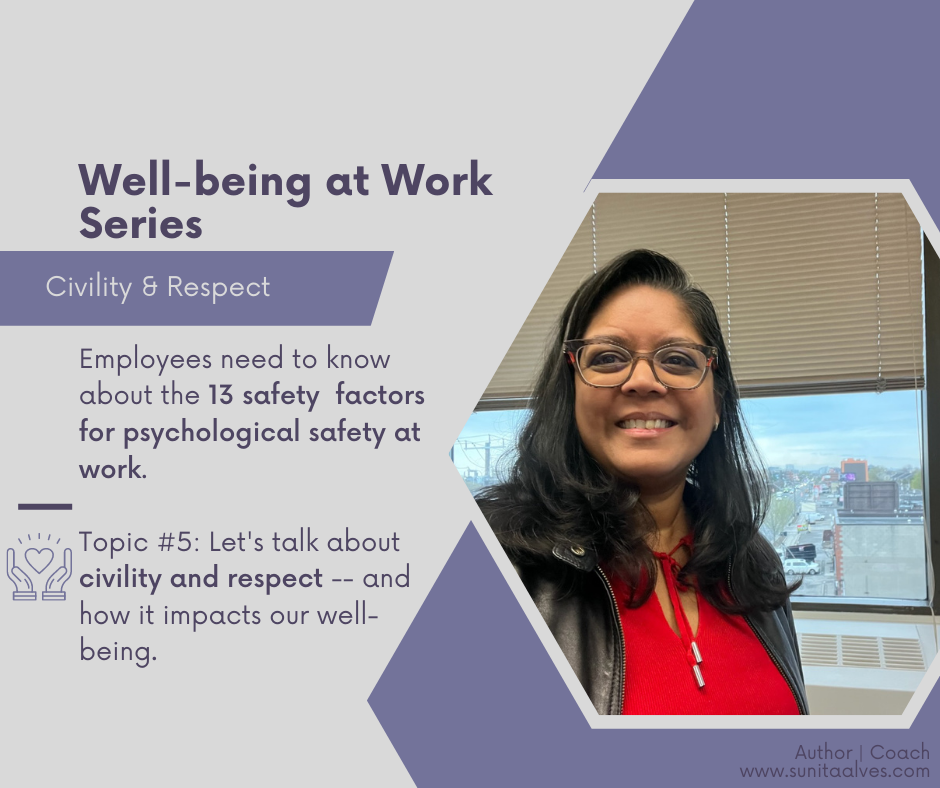It was a seminal moment when my doctor told me to choose between my health and my job.
I knew I was not healthy, which is why I was in her office. But I hadn’t connected the dots that job stress was what she was diagnosing – not just high blood pressure or depression. Those are illnesses that affect millions of people and there are many treatments – medication, counseling, diet, exercise, CBT, and so forth.
But what my doctor was writing on her metaphorical prescription pad, was to consider leaving my job as the primary treatment.
A core part of my work as a project manager and engineer has been built on solving problems in the workplace. Now the workplace itself was the problem.
And the solution was very simple with this direct choice I was given. I chose my health and started a journey of recovery, resilient well-being, and deep inner peace. It was an incredible journey from that dark moment in my doctor’s office to finding purpose and harmony again. I published a memoir in 2022 because I don’t think we talk enough about the mental health connection to the workplace – from the employee perspective who lives it, survives it, and finds a way to thrive.
The strange thing was that I knew for years that workplace stress could cause physical and mental illness. I had read articles and books. I had become a life coach. My husband was begging me to take better care of myself. I even had formal training from Queen’s University on it. So why did it take my doctor’s statement to make me really pay attention? I think it’s because I had no choice but to pay attention – I was no longer able to hold it together. It took falling apart for me to truly learn and I hope no one else has to do that.
Find more peace and harmony in the workplace when psychological safety is present.
So I’m sharing these 13 psychosocial factors that have been identified in the National Standard as factors for mental health at work.
I started this series to talk about these 13 psychosocial factors in the hope that others will know about the research that shows unsafe work is not just caused by falling objects and heavy machinery. It’s caused by commonplace stressors that many of us just accept as part of working life like:
📢 Organizational Culture (Factor #1 LinkedIn post or blog.)
📢 Reward and Recognition (Factor #2 LinkedIn article.)
📢 Workload Management (Factor #3 LinkedIn article.)
📢 Clear Leadership and Expectations (Factor #4 LinkedIn article.)
📢 Today, let’s talk about #5, civility and respect.
“Civility and respect are based on showing esteem, care and consideration for others, and acknowledging their dignity,” states the Canadian Centre for Occupational Health and Safety.
One of the stressors that I had in my workplace that year that led me to my doctor’s office was witnessing the bullying and ‘othering’ of a colleague. Working in a place that had a great reputation for caring for others and seeing the opposite behaviour firsthand was so confusing for me. A lot of stress built up as I became closer to my colleague, whom I called Rosie in the book, and tried to get others to treat her with respect and dignity. I realize now that Rosie and I were in a work environment that was harmful to our well-being.
Being civil and respectful at work seems like it should be non-negotiable.
Respect is a word that many companies have in their value statements. Yet what happens when it’s not there? “A workplace that lacks civility and respect can lead to emotional exhaustion amongst staff, greater conflicts, and job withdrawal.”
I’ve spoken with many colleagues who feel disrespected and their dignity taken advantage of. From being coerced to do personal favours like testifying as character witnesses, to bullying, to being yelled at, to being made to feel stupid because they didn’t have a technical background, or being too old and out-of-date.
Often these behaviours are subtle and hard to call out. There are many times I wished I had spoken up in a meeting when someone was being berated and said to the most senior person in the room, “That’s not respectful behaviour.”
We each have the power to speak up and show up for ourselves and others.
We all learned back in kindergarten what it means to be respectful and civil in a group setting. It’s unfortunate that some business people think that is something to throw out the window when it comes to getting results.
But we can each stand up when we see respect and dignity at risk in the workplace.
Our solidarity can mean so much to another person.
Rosie told me she felt so much better once I joined her team. We became friends and while it was heartbreaking to see how she was feeling because of work, there is power in friendship and community.
➡ Have you witnessed bullying, uncivil or disrespectful behaviour in the workplace? If so, what did you do?
➡ Have you treated others in a way that was not respectful? How did you reconcile it?
⭐ This psychosocial factor is one we teach our children and we need to exemplify in the workplace – both to demonstrate civility and respect and stand up for when it’s not there.
The next installment of this series will focus on the remaining eight factors. So stay tuned, share, have a conversation with your colleagues about this factor, and stay safe and well.
If you are feeling unsafe at work because of psychological factors, please seek medical advice or find resources here in Canada https://cmha.ca/find-help/ or here in the USA https://988lifeline.org/.
